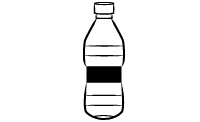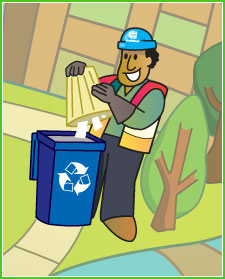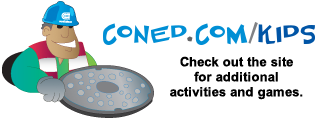|
|
Sponsored Content


 !--end main page-->
!--end main page-->
WHAT IS RECYCLING?
Grades K-2
Grades K-2
Through science and sorting, students will explore what it means to recycle and how it saves energy.
Materials Needed: A clean, dry, empty water or soda bottle; baking soda; distilled white vinegar; a funnel; a balloon; student worksheets
- To begin this lesson, ask students:
- What does it mean to recycle? (to make something new from something that has been used before; to send used items, such as newspapers, bottles, and cans to a place where they are made into something new)
- How do you think recycling saves energy? (Many items are made from natural resources, or items found in nature, such as trees, water, soil, and minerals. It can take more energy and use more natural resources to create something brand new than to recycle and make new items from old materials.)
- Introduce the process of transformation to your class by preparing a demonstration.
Explain that there are three states of matter: solids, liquids, and gases (such as ice,
water, and air). Share with students that each state of matter has the ability to
transform or change into a different state, just like recycled items can transform or be
changed into new materials. Conduct a demonstration in a sink or dishpan. Wear safety
goggles and ask students to stand a safe distance away:
- Pour 1–2 teaspoons of baking soda into an unfilled balloon, using a funnel if needed.
- Pour ¼ cup of vinegar into the empty bottle.
- Fasten the lip of the balloon securely around the mouth of the bottle without letting the baking soda fall into it.
- Once the balloon is secured, let the baking soda fall into the bottle. Gently hold the mouth of the bottle and the balloon.
- Watch the balloon fill with carbon dioxide, created by a chemical reaction when the baking soda and vinegar mix.
- Explain to students that just as the liquid (vinegar) and solid (baking soda) combined to make a gas (carbon dioxide), items that they recycle are changed to make new materials.
- Distribute the student reproducible and review the information with your students. Have students work independently to complete the page and then review the answers as a class.
- As a follow-up activity, brainstorm with students what kinds of materials could be created out of the items they put in their recycling bin.
Answers: circled items = paper, soup can, water bottle, cereal box, plastic bag (recyclable at store bins); explain that the banana peel can be composted.

